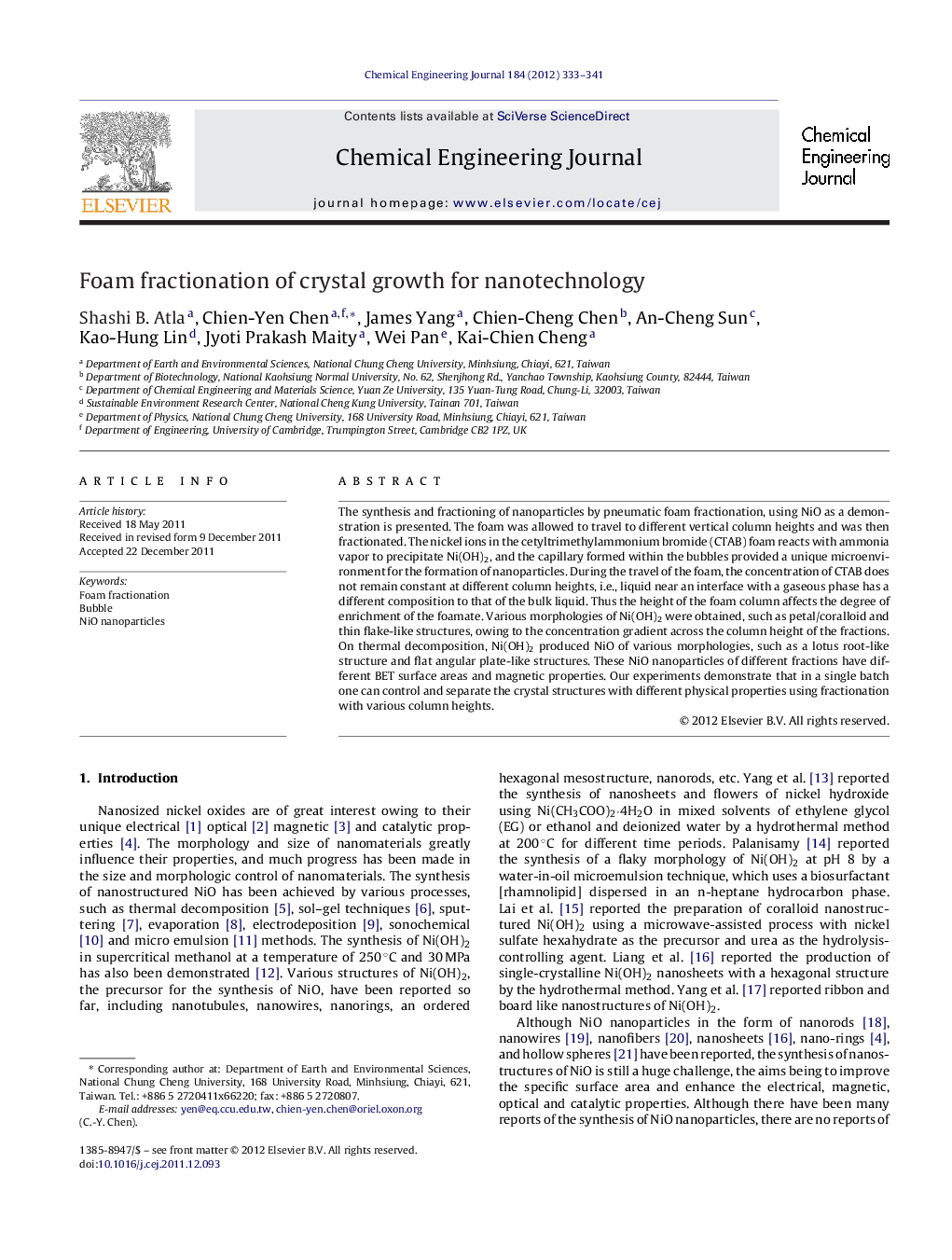| کد مقاله | کد نشریه | سال انتشار | مقاله انگلیسی | نسخه تمام متن |
|---|---|---|---|---|
| 150125 | 456444 | 2012 | 9 صفحه PDF | دانلود رایگان |

The synthesis and fractioning of nanoparticles by pneumatic foam fractionation, using NiO as a demonstration is presented. The foam was allowed to travel to different vertical column heights and was then fractionated. The nickel ions in the cetyltrimethylammonium bromide (CTAB) foam reacts with ammonia vapor to precipitate Ni(OH)2, and the capillary formed within the bubbles provided a unique microenvironment for the formation of nanoparticles. During the travel of the foam, the concentration of CTAB does not remain constant at different column heights, i.e., liquid near an interface with a gaseous phase has a different composition to that of the bulk liquid. Thus the height of the foam column affects the degree of enrichment of the foamate. Various morphologies of Ni(OH)2 were obtained, such as petal/coralloid and thin flake-like structures, owing to the concentration gradient across the column height of the fractions. On thermal decomposition, Ni(OH)2 produced NiO of various morphologies, such as a lotus root-like structure and flat angular plate-like structures. These NiO nanoparticles of different fractions have different BET surface areas and magnetic properties. Our experiments demonstrate that in a single batch one can control and separate the crystal structures with different physical properties using fractionation with various column heights.
Crystal of nanoparticles has been grown on the bubbles. By pneumatic foam fractionation the crystal structures of nanomaterials can be controlled and separated with different physical properties by fractionating using rising columns of different foam heights.Figure optionsDownload as PowerPoint slideHighlights
► We grew the crystal of NiO nanoparticles on the bubbles.
► We examine changes of foam heights for particles control.
► Increasing foam height enables growth of smaller nano-sized particles.
► Decreasing foam height produced bigger particles.
► The obtained materials have different surface areas and magnetic properties.
Journal: Chemical Engineering Journal - Volume 184, 1 March 2012, Pages 333–341